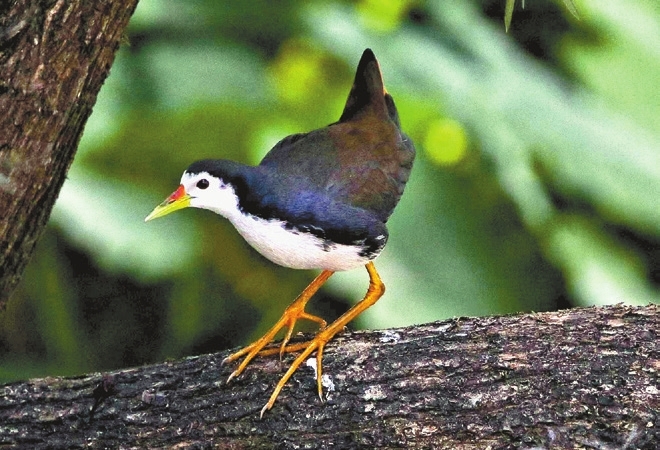
THE white-breasted waterhen (Amaurornis phoenicurus) is a medium-sized bird. Its plump body is covered in dark feathers, with a white breast and long, sturdy legs. The bird’s head is adorned with a red beak and a prominent red eye patch, making it easily recognizable. Its long tail feathers trail behind it as it moves gracefully through its habitat. This bird is commonly found in wetland habitats, including marshes, ponds, lakes and open fields. In Shenzhen, these birds can be seen near water bodies, foraging among the vegetation and exploring the muddy margins. They prefer dense foliage, which provides cover and protection as they search for food. Being omnivorous, they feed on a diverse diet, including insects, small fish, amphibians, crustaceans, seeds, and other plant parts. White-breasted waterhens use their beaks to probe the mud and shallow water, searching for prey. Their adaptable feeding habits allow them to thrive in different habitats and contribute to the balance of local ecosystems. Breeding typically occurs during the rainy season. The birds construct nests of plant materials, often hidden among the dense vegetation near the water’s edge. The female lays a clutch of up to six eggs, and both parents take turns incubating them. After an incubation period of approximately three weeks, the eggs hatch. The parents diligently care for the chicks until they fledge and become independent. The white-breasted waterhen helps to control insect populations and maintain the balance of local ecosystems. Additionally, the bird’s foraging activities stir up the soil and vegetation, facilitating nutrient cycling and promoting the growth of wetland plants that provide habitats for species including fish, amphibians and invertebrates. | 
